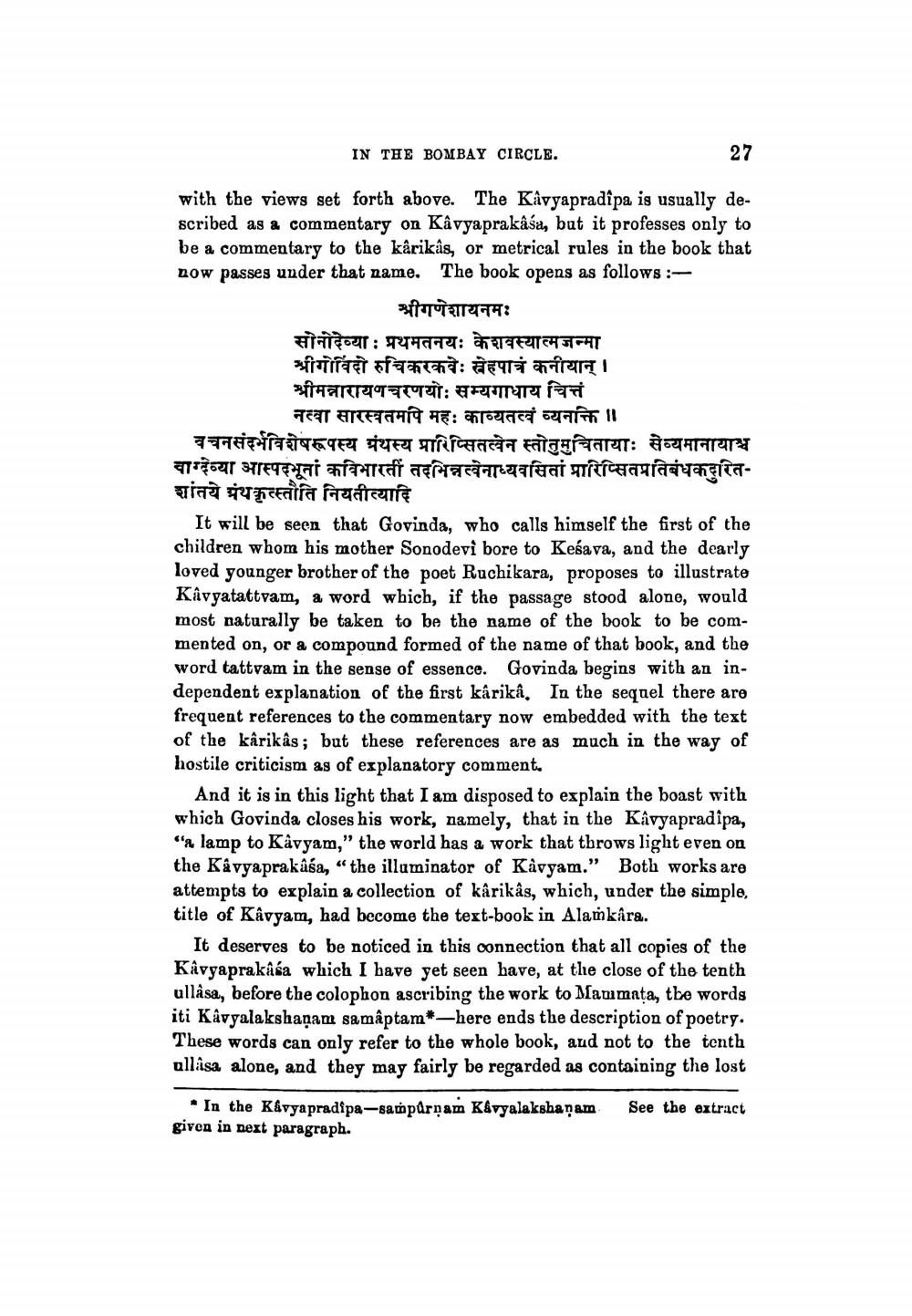________________
IN THE BOMBAY CIRCLE.
with the views set forth above. The Kavyapradîpa is usually described as a commentary on Kâvyaprakâsa, but it professes only to be a commentary to the kârikâs, or metrical rules in the book that now passes under that name. The book opens as follows:
श्रीगणेशायनमः
सोनोदेव्या: प्रथमतनयः केशवस्यात्मजन्मा श्रीगोविंदो रुचिकरकवेः स्नेहपात्रं कनीयान् । श्रीमन्नारायणचरणयोः सम्यगाधाय चित्तं
नत्वा सारस्वतमपि महः काव्यतत्वं व्यनक्ति ॥
27
वचन संदर्भविशेषरूपस्य ग्रंथस्य प्रारिप्सितत्वेन स्तोतुमुचितायाः सेव्यमानायाश्च वाग्देव्या आस्पदभूतां कविभारतीं तदभिन्नत्वेनाध्यवसितां प्रारिप्सितप्रतिबंधकदुरितशांतये ग्रंथकृत्स्तौति नियतीत्यादि
It will be seen that Govinda, who calls himself the first of the children whom his mother Sonodevi bore to Kesava, and the dearly loved younger brother of the poet Ruchikara, proposes to illustrate Kavyatattvam, a word which, if the passage stood alone, would most naturally be taken to be the name of the book to be commented on, or a compound formed of the name of that book, and the word tattvam in the sense of essence. Govinda begins with an independent explanation of the first kârikâ. In the sequel there are frequent references to the commentary now embedded with the text of the kârikâs; but these references are as much in the way of hostile criticism as of explanatory comment.
And it is in this light that I am disposed to explain the boast with which Govinda closes his work, namely, that in the Kavyapradipa, "a lamp to Kavyam," the world has a work that throws light even on the Kavyaprakâsa, "the illuminator of Kavyam." Both works are attempts to explain a collection of kârikâs, which, under the simple, title of Kâvyam, had become the text-book in Alamkara.
It deserves to be noticed in this connection that all copies of the Kavyaprakasa which I have yet seen have, at the close of the tenth ullâsa, before the colophon ascribing the work to Mammata, the words iti Kavyalakshanam samâptam*-here ends the description of poetry. These words can only refer to the whole book, and not to the tenth ullâsa alone, and they may fairly be regarded as containing the lost
See the extract
In the Kavyapradipa-sampurnam Kavyalakshanam given in next paragraph.




